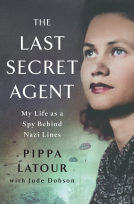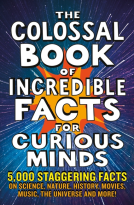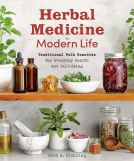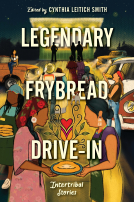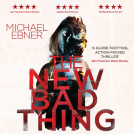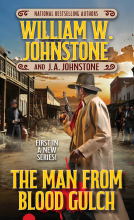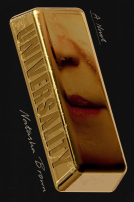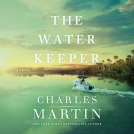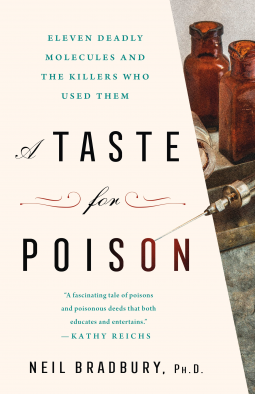
A Taste for Poison
Eleven Deadly Molecules and the Killers Who Used Them
by Neil Bradbury, Ph.D.
This title was previously available on NetGalley and is now archived.
Send NetGalley books directly to your Kindle or Kindle app
1
To read on a Kindle or Kindle app, please add kindle@netgalley.com as an approved email address to receive files in your Amazon account. Click here for step-by-step instructions.
2
Also find your Kindle email address within your Amazon account, and enter it here.
Pub Date Feb 01 2022 | Archive Date Mar 03 2022
Description
“A fascinating tale of poisons and poisonous deeds which both educates and entertains.” --Kathy Reichs
A brilliant blend of science and crime, A TASTE FOR POISON reveals how eleven notorious poisons affect the body--through the murders in which they were used.
As any reader of murder mysteries can tell you, poison is one of the most enduring—and popular—weapons of choice for a scheming murderer. It can be slipped into a drink, smeared onto the tip of an arrow or the handle of a door, even filtered through the air we breathe. But how exactly do these poisons work to break our bodies down, and what can we learn from the damage they inflict?
In a fascinating blend of popular science, medical history, and true crime, Dr. Neil Bradbury explores this most morbidly captivating method of murder from a cellular level. Alongside real-life accounts of murderers and their crimes—some notorious, some forgotten, some still unsolved—are the equally compelling stories of the poisons involved: eleven molecules of death that work their way through the human body and, paradoxically, illuminate the way in which our bodies function.
Drawn from historical records and current news headlines, A Taste for Poison weaves together the tales of spurned lovers, shady scientists, medical professionals and political assassins to show how the precise systems of the body can be impaired to lethal effect through the use of poison. From the deadly origins of the gin & tonic cocktail to the arsenic-laced wallpaper in Napoleon’s bedroom, A Taste for Poison leads readers on a riveting tour of the intricate, complex systems that keep us alive—or don’t.
Available Editions
| EDITION | Other Format |
| ISBN | 9781250270757 |
| PRICE | $29.00 (USD) |
| PAGES | 304 |
Featured Reviews
 Elle P, Librarian
Elle P, Librarian
Fascinating and darkly delightful. A recommended first purchase for collections where true-crime and forensic titles are popular.
It’s rare to find a book that gets it a 100% right in all accounts but let me tell you this one is just that.
It covers all basis. True crime. Murder mystery. Scientific sourced information. An author that can keep you enthralled and entertained.
I can’t sing this books praises loud enough.
This book makes my morbid little heart full with glee (or arsenic).
Such a fascinating and captivating book. It is well written and easy to follow. Very informative and one I will be purchasing in hardcover once available.
The author is very detailed and it shows in the excellent descriptions. I truly enjoyed reading A Taste for Poison.
Great work!
I received this book for an honest review from that galley #netgalley
This is a great non-fiction book I've always been fascinated by poisons and the people that use them as a history major especially. you can tell that this book went into great detail and I really appreciate that.
Overall I really enjoyed my time reading this book! I, like I'm sure many people, have a fascination with poisons and their history and this was a thoroughly enjoyable and enlightening read.
In TASTE OF POISON, we get a deep dive into a different poison each chapter. We learn about the history, the naming, one or two cases of poisoning linked to the chapter's specific poison, and how, scientifically, the poison interacts with the body, making it so deadly.
I found the balance between historical context, murder/trial, and chemistry to be really well done, and it kept the book moving at fun pace. I don't necessarily process scientific information super well, but it was done in such a way that was really digestible and accessible.
I would say the strength really lies in the connection of historical context. I had a lot of lightbulb moments reading the book and was constantly highlighting fun-facts to recall later on. From how things were named, and learning of the prevalence of poisons in building history and meaning into what we still know and do today- the dilating of eyes from belladonna still being used today in low lighting in restaurants was a particularly fun fun-fact.
My main critique of this book is that I think it needs a sensitivity read. There are some outdated words, ideas, and ingrained beliefs from the author that pop up throughout the book, and I think it detracts from overall spirit of the book.
Thank you to Neil Bradbury and St Martin's Press for an advanced reader copy of this book in exchange for an honest review.
Thank you to NetGalley, the author and publisher for an e-ARC in exchange for my honest opinion
of this book.
First, I will say if my science teachers back in high school spoke and explained things the way this author does I would be so much more interested in science than I was and who knows where that might have taken me!
This author does a wonderful job of explaining each poison, its history, what its medical benefits are (when used properly) and how it effects the body in both a positive and negative way. He also provides stories of misuse of the poison. I found myself Googling each case after I read that section to find out even more.
The book is well paced and you will not get overload from too much science. A great read for any True Crime Lover as well as those interested in history!
 Danielle W, Reviewer
Danielle W, Reviewer
I received an ARC of this book from NetGalley in exchange for an honest review.
This was definitely a different spin on “true crime.” It was super interesting to read about different poisons and how they have been used throughout history.
Neil Bradbury writes in 'crime noir' fashion a book at the intersection of medical science, criminal history and classic literature. With his dark humor, he keeps the story of 11 ways to poison someone connected to the 11 ways poisons work and criminal investigators likely catch you if you would be so foolish to put to use his teachings.
It is a fun and interesting ride, each chapter loosely connected to the previous, but still independent enough to read in sections or in one go on a plane ride across the nation.
This book is filled with some fascinating stories about past poisoners and the various substances they used. It also goes deep into detail about how the substances work and affect the body which, while interesting, became a little tedious at times. I was amazed by how one such substance was able to be used to try and kill someone in one instance, and to try to hide the use of poison in another. And then it was used as an antidote to a poison in the 3rd situation! You can’t get more versatile than that. It always amazes me how people come up with so many ways to try and kill one another, and poison is one of the most sneaky and sinister. It’s a good thing that science has gotten so much better at detecting it in recent years, but it still takes someone who thinks to look for it first, in most cases. A satisfying read, overall. Advance electronic review copy was provided by NetGalley, author Neil Bradbury, and the publisher.
 CATHY C, Bookseller
CATHY C, Bookseller
A Taste for Poison by Neil Bradbury is a well written and meticulously researched history of the favored poisons used throughout the centuries. Beginning with arsenic, that old favorite, to polonium, the history.
Arsenic has long been a favorite, but was made more popular as a favored weapon of the Borgias. Although the recipe has been lost, cantarella was frequently used, as was Aqua Tofana. Believed to be a mixture of arsenic, lead, and belladonna, cantarella was so precise that it could be considered time release.
Then there's polonium, arguably the most expensive poison in the world. After all, doesn't everyone have a bit of refined uranium lying around.
I would highly recommend this title to anyone interested in the history of poison.
In the interest of full disclosure, I received a free digital copy of this title to review from Net Galley.
#ATasteForPoison#NetGalley
 Reviewer 173301
Reviewer 173301
A Taste for Poison by Neil Bradbury is a superb read with a well defined plot and characters. Well worth the read!
 Jill F, Reviewer
Jill F, Reviewer
What a fascinating book this is! With an engaging mix of stories about the uses of the eponymous poisons as well as background into their origins and mechanisms of action, Bradbury has crafted a book that proves fact is often stranger than fiction. His writing style is conversational and easy to fall into, whether focusing on the poisonings or the poisons.
 Lisa A, Librarian
Lisa A, Librarian
This book takes an in-depth look at a variety of poisons -- how they work, their therapeutic vs. criminal uses, how they react in the body, how they were discovered, etc. Every poison profiled is also connected to criminal cases, some historical and some more recent. A disturbing number of the crimes discussed were carried out by members of the medical profession. Until relatively recent times, most poisoners were able to go about their deadly work without fear of being detected, since the scientific community had no way to distinguish a death from poison from a death due to diseases which were common at the same time.
The author does a wonderful job of explaining how each individual poison causes death. Even so, the explanations at times were a bit difficult to follow. Still, it was very interesting to read about how the body reacts, both outwardly in terms of symptoms, as well as the cellular process that is occurring within the body. The criminal cases discussed were also fascinating. It was quite disturbing to read how an early way to detect poison was for investigators to "taste test" various bodily fluids and tissues to determine if poison was present. If that were still the case today, I'm sure more poisoners would be able to get away with murder! The book ends with a helpful section called "Pick Your Poison" where each poison is discussed in terms of how it is administered, what the poison does to the body, symptoms observed after ingestion, lethal amount needed, and antidote (if any). I highly enjoyed reading about all the various poisons, and especially all the historical information surrounding each one.
 Librarian 71930
Librarian 71930
I can't get enough of books about poisons and weird medical "cures," and this was a solid entry in the subgenre. I liked the clear organization of it. I will suggest this for purchase for the library collection, and have already recommended it to people.
 Media/Journalist 207544
Media/Journalist 207544
The skillful melding of medical and cultural history in Neil Bradbury’s engrossing A Taste for Poison: Eleven Deadly Molecules and the Killers Who Used Them will appeal to lovers of history, mystery, and true crime. The author’s detailed accounts of how eleven historically significant poisons work appear along with accounts of how, when and why these deadly substances were used in cases both well- and little-known. Lovers of history, medical and scientific lore, mystery fiction and true crime among others will appreciate Bradbury's lively expert treatment poisons and what might be called the poisoner's art.
 Sandra B, Reviewer
Sandra B, Reviewer
Simply delicious! As a retired medical transcriptionist, I found this book to be absolutely delightful. Even without a medical terminology background, one would find this book full of interesting tidbits and stories about poison I would find fascinating. Easy to read and enjoyable. I would definitely recommend this book! I received an e-book from NetGalley in return for an unbiased review.
 Educator 786386
Educator 786386
This book was a fascinating insight into the science behind and effects of many different common (and not so common) poisons.
The interweaving of the science and stories about attempted and successful poisonings throughout history was very well done. I did, however, find myself bogged down in some of the science despite trying as I might to understand it as a layman. That being said, science was never my forte in school, so I was not surprised to get a little lost.
The author is clearly well versed in the subject and has done an astounding amount of research that is presented in the clearest way possible. The stories were engaging and I enjoyed my reading experience.
Many thanks to St. Martin's Press and NetGalley for allowing me access to this advanced reader copy in exchange for an honest review.
YES! Finally - I have been waiting for a book like this. I am a huge nerd when it comes to chemistry, true crime, and microbiology. This was a dream come true book. I am always on the hunt for new material to read regarding medical history.
This is not an intimidating book by any means- so don't be fooled by the words molecules and chemistry in the synopsis of the book.
The author did such a fine job balancing everything-from the science aspect to the crimes themselves. This is one heck of a fascinating book.
This was a very enjoyable read- and will be picking up a copy for myself to transfer over my notes and all the highlighting I've done in my kindle.
Thank you to Neil Bradbury and St Martin's Press for an advanced reader copy of this book in exchange for an honest review.
I absolutely loved this informative true crime book based on poison. Is divided into chapters based on the type of poisoning and a crime committed with it. There are also several references in the book to crimes created in fiction books.
 Wendy S, Educator
Wendy S, Educator
Bradbury uses a breezy writing style to tell about poisons used to kill. Interspersed in each section is a narrative of someone who has killed or been killed with the poison being discussed as well as information on the poison, where it comes from, how it is made and what effect it has on the body. Many of these poisons have extremely gruesome effects on the body, so be prepared to be grossed out.
The stories Bradbury has chosen to tell caught my interest and in more than one case, i felt the need to look up more on the victim or the killer. What does it say about me that I loved this book?
 Julie K, Reviewer
Julie K, Reviewer
I didn't initially enjoy this book as much as I expected to since I obviously did not read the description very carefully. I was expecting a mystery with poison as the killer's choice. This is not a fictional novel.
After reading more of the reviews from others and moving along with learning more about novel-writing, I realized what a wonderful "RESEARCH' opportunity this book provides. If you're a mystery writer and you need to choose your poison, this is your book.
Poison Choices were provided with brief descriptions of fictional stories which utilized this choice along with the chemical properties and details of death. At this point in my writing career, this is the perfect choice.
 Jill T, Reviewer
Jill T, Reviewer
4.5 stars
A Taste for Poison
by Neil Bradbury, Ph.D.
A fascinating book that immerses the reader into an in-depth look at poisons and how they have been used through the years to commit murder. Prior to reading this book, I had not heard of most of these crimes. It was quite interesting how old some of these murders were, it is easy to forget that murder is not something of just the last century but is as old as man himself.
I highly recommend this book.
I received a complimentary copy of this book from the publisher and Netgalley.
This was such a cool book! Every now and then I need a break from thrillers and horrors, and I’ll usually grab a non-fiction as a palate cleanser. I’ve had my eye on this one for awhile and I was lucky to get an Advanced Read Copy so I didn’t have to wait long…
I really liked this one. Informative and interesting are two great qualities, and this book was both. I learned a lot of fun facts, like insulin was once used to control schizophrenia (by putting patients into a coma), or that so many things were once used as both medicine and poison, with the doses between the two being way too close for comfort.
The eleven poisons examined are aconite, arsenic, atropine, chlorine, cyanide, digoxin, insulin, polonium, potassium, ricin and strychnine. You’ll get the chemical breakdown, history and other uses for each - and you’ll also get examples of times these substances were used to kill.
History, science and true-crime all in one; this book is a triple threat! I’m giving this 4.5 stars rounded down because it got a bit dry in spots, but it was still a great “infotainment” book. If you like any of the above-mentioned genres, I’d recommend this one to you!
(Thank you to the publisher, author and NetGalley for the ARC in exchange for my review.)
 Bookseller 264981
Bookseller 264981
This was an interesting book describing the most used poisons for homicide! well written and intriguing, I enjoyed it!
Entertaining book! The stories are fascinating to hear and are great mini true crime novels in themselves. My only gripe would be the sections of the chapters where they go into the history and chemical affects of the poisons. Those parts read just like a textbook, informative but a bit boring.
I received an advance copy of, A Taste for Poison, by Neil Bradbury, PH.D. This was a really good, informative story on poison. The many types of poison, and how they can kill you. Also, people who used poison to kill.
 DOMINIQUE C, Reviewer
DOMINIQUE C, Reviewer
I really enjoyed this book. The author was able to relate complex scientific principles in a straightforward, easy to understand manner. He gave the history of a poison, how it was discovered, its action, treatment (when available), and real-life examples of when the poison was used to kill or attempt to kill someone. The book is very descriptive and detailed without going overboard or too far into the weeds.
 Doug Y, Educator
Doug Y, Educator
Bite-sized chapters (bad pun) make make for easy reading. Thought-provoking, informative, but most of all a very interesting book written so laypeople can understand more about poisons.
 Mary B, Reviewer
Mary B, Reviewer
A Taste for Poison is fascinating! The different uses of poison is clearly explained and the science behind them is easily understood. You don't have to be well versed in science/chemistry. Dr. Bradbury includes some chilling stories about the insidious use of poison by seemingly "nice" people. Loved every page of this must-read book.
Thank you to NetGalley.
This book was a page turner from beginning to end. It is crazy to not only know the history of poison but what people actually think that they can get away with and then how they get caught. Highly recommend if you are a fan. I received an advance review copy for free, and I am leaving this review voluntarily.
As a nerd who has always loved true crime and especially the more "delicate" art of poison, this book was the absolute perfect read for me. I cannot wait until this book is out and I can add it to my shelves!
 Jeremy R, Reviewer
Jeremy R, Reviewer
"A Taste for Poison" was a very interesting book. The author discusses eleven different chemicals or substances that can be used as poisons -- some very familiar, such as cyanide, arsenic, or chlorine, and some less familiar, such as atropine, aconite, or polonium. He discusses the legitimate uses of these various chemicals, some of which are critical for the human body or certain types of medical care (for example, insulin, digoxin, or potassium) in certain forms or certain concentrations. The author talks about specific cases where people have used the chemical or substance to poison others in order to harm them or kill them, often succeeding. He explains why the particular poison was chosen, which was often because it mimicked symptoms of natural illnesses or natural causes of death and because it was considered impossible or difficult to detect. However, even those poisons that were considered impossible to detect have not remained that way, with dedicated scientists finding ways to extract evidence of the chemicals from tissue or bodily fluids. While there are many ways to kill a person via poisoning, it has become nearly impossible for a poisoner to get away with it if his/her identity can be determined. The discussion of cases of poisoning and how the perpetrator was caught and guilt proven was interesting. However, the most fascinating aspect of the book for me was the detailed explanation of how the chemical affected the body -- which organs or tissues or bodily functions were affected, the biochemical process that was involved, and the changes that occurred in the body in response to the poisons. The end of the book contains an appendix that indicates the route of entry, lethal dose, targeted part(s) of the body, symptoms, and antidote (if it exists) for each poison.
I received a copy of the e-book via NetGalley in exchange for a review.
 Account D, Reviewer
Account D, Reviewer
this was a interesting read, I found the poisons and how they were used in crimes was strange and bizarre. It was a fascinating read and well done.
 Whitney B, Reviewer
Whitney B, Reviewer
Science - check, true crime - check, murder mystery - check. This book manages to keep the scientific parts interesting, even for those without a background or major interest in science. I really enjoyed this one.
Thank you to the publisher for an advance reader copy of this book in exchange for my honest review.
With A Taste For Poison, my inner science geek got to hold hands with my inner true crime junkie, embarking on a dark and interesting journey. This book is primarily science-based, with each chapter focusing on a different poison that has been used for both good and evil through the ages. Bradbury explains the origins of each, as well as a pretty detailed account of the poison's effects on the human body (let me tell you, it's not pretty!). He breaks them down into two categories: biomolecules (ricin, digoxin, insulin, atropine, strychnine, aconite, and cyanide) and molecules from the earth (chlorine, arsenic, polonium, and potassium round out this section). There are historical notes as well, especially on the subject of creating accurate testing/detection methods which helped in the early prosecutions of those who thought they could get away with murder.
For those who enjoy the true crime aspect, Bradbury introduces us to various criminals who have used these poisons as their weapons of choice. Many of the cases are much older (1800's to early 1900's) but there are a few from more recent times, including the man who laced several bottles of tonic water at a local grocery store with atropine just to get to his wife, and the former spy who died a terribly slow and painful death from polonium poisoning. Compared to the scientific explanations, I found the true crime aspect to be a bit lacking at times. Even though they were thoroughly researched and well presented, I thought some of them just didn't rise to the same level as the scientific narratives (or perhaps it was the case studies themselves that lacked a certain shock factor, I'm not sure).
What I enjoyed most about this book is Bradbury's writing style. While the information can be overwhelming at times, it is written to be easily accessed and understood by everyone. Even with such a weighty topic, he keeps the narration on the lighter side, with some darker humor thrown in as well. In short, if you're like me and have an inner science geek and/or inner true crime junkie, be sure to put this book on your 2022 reading list!
 Reviewer 329115
Reviewer 329115
I was reading quietly at the dining room table while enjoying a bowl of scotch broth. Suddenly, the Long-Suffering Wife (LSW) entered, stage right, and plunked her open handbag on the table. A clear Zip-Lock® baggie, containing three vials, fell out of the handbag and onto the table in front of me. The vials, I noticed, contained liquids showing a tint and a viscosity which, in my sight, indicated that they were not water.
“O! Vision of Loveliness!” said I (for this is how I often address her). “I am even at this moment reading an enjoyable and informative book (which I received for free from the publisher for review) that is essentially a history of poisoning. You might think that this is a practice mostly done by dastardly men on their long-suffering (like you) wives or girlfriends, but (particularly in recent times) women give as good as they get in the poisoning business, seeing as comparatively inferior upper body strength is not a disadvantage when poisoning, and also because they can often accomplish the act without irreparable damage to their frocks. Therefore, seeing these three vials troubles me much more than it might otherwise, as each recently read chapter contains at least one alarmingly thorough description of the agonies which the poisoned endure, along with disturbing deep dives into the clinical details of the disrupted bodily functions which generate aforementioned agonies, as well as the methods used to bring the poisoners to justice, which are now much more effective and expeditious due to advances in medical and chemical science. So, what’s the deal with these unusual liquids?”
“They’re nothing,” replied LSW, grabbing the bag and exiting the room.
To be fair, unhappy and unprincipled wives, husbands, and other romantic entanglements don’t even seem to achieve the status of a majority of high-profile poisoning cases presented in this book, given the competition they receive from certain modern Slavic governments and (perhaps more disturbingly for those of us leading ordinary lives) murderous nurses. About the latter, allow me to say that the existence of these sadists (apparently exclusive to our own age) has perhaps not been sufficiently exploited by governments and other entities who wish to motivate us to be vaccinated against COVID and other modern horrors. In my case, reading about how these twisted anti-Florence Nightingales managed to remain at liberty to poison the already ill for astonishingly long periods of time, often aided by large dollops of bureaucratic sloth and indifference, has increased my desire to remain vaccinated up to the eyebrows, if it means decreasing the possibility that I will escape the horror of being intubated by a new modern iteration of like-minded maniac.
I found that making tables often helps me organize and retain information that I read. In this case, I used Google Sheets to keep track of the poisoners and their tonic of choice, plus other relevant details. Some chapters feature the story of more than one horrific poisoner, but to keep the organization relatively simple I have decided to only list the first, most prominently featured, poisoning in each chapter, you can also see it here
https://docs.google.com/spreadsheets/d/1xqWzhpys0vuGHLz9b2TMXIZoFz2LKq-wIX_KOYmsVNo/edit#gid=0
In the meanwhile, I have taken advantage of our quiet evenings at home after dinner, while LSW is contemplatively sticking pins into the eyes of dolls bearing the image of political figures with whom she disagrees, to remind her that now, as a method of disposing of one’s enemies, poisoning is now hopeless old-fashioned, at least if one wishes to remain undetected and therefore at continued liberty to hatch diabolical plans which will trouble the sleep of global oligarchy. I believe my remonstrances have had the desired effect, but now she is asking more questions about the number and size of the hammers we have around the house.
Not only did I receive a free advance electronic review copy of this book from St. Martin’s Press via Netgalley, I also got a very pleasant invitation by email to download and review this book, so of course I did. It is perhaps a flaw in my nature that, if you indicate that you value my opinion, I will do nearly anything you ask.
This was a fascinating book that talked about many notorious poisons, how each effects the body to catastrophic effect, and one or two stories of cases where they were determined to have been used. It also talks about what we've been able to learn from various poisons, some even to treat disease or counteract other poisons. It was a times a bit gruesome, since it does describe the effects of the poison on the body, but it was a fascinating read.
This book was a really interesting blend of popular science, medical history and narrative crime nonfiction. Dr. Neil Bradbury explores the most morbidly captivating method of murder from a cellular level. The biomolecules of death covered were insulin, atropine, strychnine, aconite, ricin, digoxin, cyanide, and naturally occurring minerals potassium, polonium, arsenic and chlorine. I thought this book read like a true crime podcast with an episode for each poison. Each chapter illustrated in detail a case that was attributed to that poison, explaining in detail all of the characters, the background and the extenuating circumstances. The author went to an amazing level of research with this book and the result is fascinating. He did not shy away from delving into the details of the science behind each substance- the reaction at the molecular level and the biological impact. Super interesting. It was excellent – the history, the crime and the science. I experienced this book as a dual read, flipping back and forth between reading the ebook and listening to the audiobook. Thank you to Netgalley, St. Martin's Press and Macmillian Audio for providing me with a temporary ARC.
This book covers poisons from those used in ancient Greece/Egypt/Rome through those used in more modern times. Poisons used prolifically and one that had a single use in 2007.
This book is written in an easy to follow and entertaining style. It definitely made me feel smarter while reading it, though I likely won't remember all the interesting scientific details for very long. The author does a great job contrasting how most of these chemicals have a fine margin between being used as tonic or being toxic. Most of these chemicals have medicinal uses, not just to cause harm. That was the most interesting part for me. I especially found the chapter on Potassium helpful. There is a good reason it is a staple ingredient in sports drinks.
I enjoyed the individual case histories given for each chemical as well. Thank you to Netgalley and St Martin's Press for the opportunity to enjoy this informative e-ARC. I look forward to adding it to my library once published.
 Tara L, Book Trade Professional
Tara L, Book Trade Professional
A Taste For Poison by Neil Bradbury is a deep dive and unexpectedly fascinating look into a particular method of murder. I requested this book after loving a recent bestseller, The Lost Apothecary, which featured the use of poisons, both in the past and present timelines. And A Taste For Poison took me on a tour, using both science, history, and true crime stories. I thoroughly enjoyed the journey!
This was an absolute fascinating book. I love to watch True Crime TV shows and to read murder mysteries. A TASTE FOR POISON brought the two together in an interesting manner. Eleven poisons are introduced (although we know most of them already), the composition, effects, and a historical case of murder via the poison, comprise each chapter.
Highly recommended for others who enjoy my same kind of affection for the science of murder.
 Casey W, Reviewer
Casey W, Reviewer
This book was a fascinating read. It covers much more than what the title indicates. It does present individuals who used the various forms of the poisons listed and their success or failure in accomplishing their goal. The book also covers how the poison impacts the body and causes death. In addition, the author details how each poison is used for medical treatments to ease pain or as antidote. I strongly recommend this book for anyone who is interested in the subject.
I received a free Kindle copy of this book courtesy of Net Galley and the publisher with the understanding that I would post a review on Net Galley, Goodreads, Amazon, Facebook and my nonfiction book review blog.
Thus book was so interesting! Definitely a different take on true crime. Highlights the role of poisons in murder. There is also a wealth of knowledge about how different poisons affect the body. Well written, well researched. Intriguing read.
I loved this book! And if you liked The Case of the Murderous Dr. Cream, or City of Poison City of Light, then you will love this book as well. Dr. Bradbury presents an expertly assembled overview of the most common historical poisoners, and the poisoners who love them. But more than that, he brings life to what would otherwise be a stunningly academic topic. He is able to look over the centuries with a timeless eye, objectively describing events and people without either editorializing or trivializing, somehow still empathizing enough that the subjects of his momentous study come across as real people to the reader. This is an excellent new addition to the true crime aficionado's shelf.
Great Non-Fiction for any mystery, espionage, or thriller fan!
Neil Bradbury dives into the histories of a number of different poisons and murder cases that have made them famous. The scientific context was easily digestible and gives a wonderful insight into how the poisons act in the human body. I quite enjoyed all of the quotes and references to classic mysteries and spy dramas, including Agatha Christie, Arthur Conan Doyle, and Ian Fleming. However, Bradbury does not dive into much detail on how these poisons are used in pop culture, rather he focuses on true crime cases. I would have loved more domestic cases, or perhaps just more variety from the nurses and doctors gone rogue, but in the end I could have read about many more poisons and I hope there is a sequel in the works!
 Reviewer 546210
Reviewer 546210
Wow! I really enjoyed this. It was educational and interesting. Because this is about poisons the author followed many of the crimes associated with it. So if you love true crime I think you’ll really enjoy this. The author takes a deep dive into this topic and explains the chemistry along with what it actually does to the person and how it’s detected.
Really well done and I’m glad I read it. Very interesting.
Thanks Netgalley.
 Rachel B, Media/Journalist
Rachel B, Media/Journalist
A book about poisons and the killers who used them. This reminded me a bit of the The Poisoner's Handbook by Deborah Blum but with more emphasis on the chemical side of various poisons from the obvious (cyanide) and archaic (belladonna) to the surprising (insulin). We might not think of all of these as deadly compounds but after all the dose makes the poisons. A really intriguing and informative read.
 Teresa G, Educator
Teresa G, Educator
Thank you Netgalley for this ARC of A Taste for Poison by Neil Bradbury.
Is there something wrong with me that I'm into stuff like this? I'm going to argue yes.
Bradbury has taken his knowledge and extensive education and brings up a history and account of poisons. Everything poison. How they originated, how they were used, some of the largest crimes using said poison, and the science behind how the poison works. It's as fascinating as it is terrifying. And fear not! If you think that you are going to be bogged down with a scientific textbook, Bradbury masterfully weaves science and anecdote, keeping you on your little true crime loving toes. You little freakshow you :)
Bradbury masterfully laces together scholarly knowledge about the chemical compounds of poisons and the crimes they were used for.
One of my favorite sections was regarding insulin- the thing that keeps many diabetic people alive has been used as a poison since almost 12 years after it’s development as a medicine. Bradbury tells us the stories of many infamous poisonings, as well as little-known poisonings.
This was a very informative read and for the most part very engaging.
Thanks to NetGalley and the publisher for this free ARC in exchange for an honest review.
 Dan O, Bookseller
Dan O, Bookseller
My thanks to NetGalley and the publisher St. Martin's Press for an advanced copy of this medical and historical guide to murder.
Neil Bradbury Ph.D., has created a interesting new hybrid, a true crime/ how-to book that is as informative as the Physicians' Desk Reference, and as thrilling as an Agatha Christie mystery and as disturbing as a Harold Schechter serial killer profile compendium. The mix of medical science and ghoulish crime makes for a very fun and educational read.
Dr. Bradbury in A Taste for Poison: Eleven Deadly Molecules and the Killers Who Used Them, writes of one of the most popular murder weapons in both fiction and historical events, poison. Mixing both real cases with laboratory studies explaining the chemical compositions and effects of said poisons, and how they were used, Dr. Bradbury tries to separate the fiction from the fact, and does a very good job. Poison while used a lot, is not the best nor the most effective or efficient. However sometimes a poisoner can get lucky and again that is covered in many of the cases that are written about. The book is not too technical, nor simplistic, but with a good balance that doesn't drag the narrative down or bog down the reader with unnecessary information. The uses of poison are covered well, and move well, without being glamorized or made Lifetime movie of the week.
This book should appeal to fans of both Ann Rule and Mary Roach. Not too heavy and not too hey isn't this cool. A very good balance of science with true crime history. A perfect Valentine's gift, accompanied by a nice box of chocolates and some roses, with the thorns removed, just in case.
 Erin C, Reviewer
Erin C, Reviewer
Special thanks to NetGalley and the publisher for a free, electronic ARC of this novel received in exchange for an honest review.
Expected publication date: Feb. 1, 2022
Neil Bradbury combines science and murder in his new non-fiction work, “A Taste for Poison: Eleven Deadly Molecules and the Killers Who Used Them.”
Bradbury is a professor of physiology, so he definitely knows what he’s talking about, but he manages to make this novel easy to read, and the science aspects, when discussed, simply add to the entertaining nature of the novel, and provide further information for the reader.
Bradbury’s book takes eleven deadly poisons that either occur organically in our bodies or grow in nature (some examples being insulin, chlorine, cyanide, radiation, ricin, belladonna/nightshade) and gives them each a chapter, where their origin and uses are discussed. Further, Bradbury provides examples (from modern day, within the last twenty years, and from as long ago as ancient Rome and Greece) of people who have used these poisons to kill. However, Bradbury does not forget to mention how each compound can also be used to the benefit of humanity, and how they serve the body when used for good.
“Deadly Poisons” is scientific without being wordy, and surprisingly entertaining. I was unexpectedly impressed with Bradbury’s writing style, and found this novel provided me with information I didn’t realize I wanted to know. “Poisons” manages to tie science together with murder in a fascinating, page-turning way and I recommend this novel for anyone who wants to know more about the world around us, and what grows in it.
Genre: true crime, popular science
Pub date: 2/1/22
In one sentence: A look at 11 deadly poisons and the crimes and science behind them.
This book is exactly what I look for in popular science - it does a great job explaining he biological mechanisms of the poisons without going into too much detail or boring the reader. I liked the set of crimes Bradbury selected - there was a good mix, including some I was familiar with and some I wasn't. There's also a "pick your own poison" appendix if you're interested in seeing the poisons compared head-to-head. I often read nonfiction slowly, but I tore through this book - it's very readable!
It's kind of ironic that this book is being released two weeks before Valentine's Day given that so many of the crimes were committed against partners. BUT if you have a partner who loves science or true crime, I think this would be a fun gift for them.
Thank you to St. Martin's Press for providing an ARC on NetGalley in exchange for an honest review.
 Reviewer 845921
Reviewer 845921
A comprehensive, easy-to-follow overview of poisons: how they work, the history associated with them, and their uses. There is a good combination of scientific explanations and history. The book is well-organized and written in an accessible way.
"Poison has a certain appeal …. It has not the crudeness of the revolver bullet, or the blunt instrument." - Agatha Christie, They Do It With Mirrors, 1952
What It's About: A TASTE FOR POISON is an intriguing read blending science and true crime which explores the nature of eleven poisons, their effects on body at the molecular, cellular and physiology level and how they were used to commit murders.
My thoughts: Each chapter covers the different poisons in details - Insulin, atropine, strychnine, aconite, ricin, digoxin, potassium, polonium, chlorine, cyanide and arsenic - from their origins to how they were used in murders and eventually identified through forensic science. So there were some medical history as well.
I think this was a well-written book. The author explains complex biochemical processes and concepts in an easy to understand way. But I did find some parts were a bit too sciency for me and that is just me.
I went back and forth between the ebook and audiobook, and I ended up spending more time on the audiobook. The narration was really well done.
Overall, this was an intriguing and enjoyable read. It was both entertaining and informative! As a true crime aficionado, I enjoyed learning about the different cases - some new and some familiar to me!
Pub. Date: Feb 1st, 2022
***Thank you St. Martin's Press, Macmillan Audio, author Neil Bradbury and NetGalley for this gifted review copy. All opinions expressed are my own.***
I truly liked this book even with all the science in it, Neil Bradbury wrote it perfectly for the layman. It was actually the science that I really like about it. I knew some but Neil Bradbury explained it in a way that I could understand. You could tell that Neil Bradbury knew his stuff and dare I say enjoyed talking about poisons. I also liked that he wrote about how the poisons were used by the killers. I will be reading more from Neil Bradbury and recommend this to all my science and true crime friends. Thank you Netgalley, St. Martin's Press and Neil Bradbury, Ph.D. for letting me read and review this book.
Interesting read on poisons and true crime stories where poisoning was involved. If you area true crime junkie like me, this is a must read. Thank you to the publisher and NetGalley for an arc in exchange for my honest review.
Neil Bradbury pens a new kind of true crime novel with A Taste for Poison, one that is equally informative as it is entertaining. Exploring lesser-known poisons used in crimes, like the lifesaving insulin and hardly heard of polonium-210, this book was incredibly researched and Dr. Bradbury’s experience in Physiology truly shows. This book is wonderfully scientific, but spoken at the level of the everyday person, which makes it accessible to a wider audience. It explores a wide assortment of criminal cases, from long ago to much more recently. Any true crime buff should take a look at this one when it releases.
A Little Gem — Interesting Read, Macabre At Times
The author has selected eleven poisons, both ancient and modern, and written an informative chapter for each one. Each chapter has some of the poisonous history of the substance. How was the poison first discovered and used is interesting because many of these poisons originally were used for medicinal purposes to treat various afflictions. The author also includes one or more legal cases or incidents showing the darker side of the poison. The trials provide an insight as to why the poisoner chose that particular poison, how the poison was determined to be in the body, and how dosage was determined to be lethal. Details on the last two were quite interesting as the tests do not meet the modern ethical standards for testing on animals. If you are very disturbed by the killing of animals for science, this book may not be for you. The author includes a section on exactly how the poison works to bring on death. This section of the chapters can become a little heavy in the biochemical nature of the poison’s action. I have a masters degree in chemistry so this section was very interesting for me and not a problem in understanding. I believe that the author did bring the level down so that most readers could understand or, at least, provide some insight into how the poison works. Lastly, for the poisons that do have a medical use, the author provides more information on that use of the substance.
The author’s style of writing made the reading of this book enjoyable for me. Of particular note was the author’s use of a cutting humor inserted in the storyline as an aside where in a theater production has the speakers thought known only to the audience. These always caused me to smile or chuckle.
Overall, it is an interesting and light read that allows some insight into eleven poisons that generally are not known. The information is doled out in eleven easy to read chapters. Even if you skip the biochemical portions in each chapter, I believe that this novel still will be a good read. I rate it with four stars because this book is not a must read, If the subject interests you, this book can be a very good read for you.
I received a free e-book version of this novel through NetGalley from St. Martin’s Press. My review is based only by my own reading experience of this book. I wish to thank St. Martin’s Press for the opportunity to read and review this book early.
 Deborah W, Reviewer
Deborah W, Reviewer
"A Taste for Poison" explored how eleven different poisons work on the body. The author covered poisonings using insulin, belladonna, morphine, strychnine, ricin, aconite, cyanide, potassium, polonium-210, arsenic, and chlorine. He told about one or more cases that used the poison, then described the symptoms, how it could be treated if caught in time, and the biological details about how the poison disrupts the normal functioning of the body to create the symptoms and death. Most of the murders were from the mid-1800s to modern day, with a focus on relatively recent cases in England and America. The cases were told briefly but in an interesting way. The biochemistry details were easy to follow, with enough detail to follow what goes wrong without getting too bogged down in the science. Overall, I'd recommend this interesting book.
This has got to be one of the most fascinating books there is...not only does the author vividly describe poisons and toxins but also the symptoms experienced, what happens in the body molecularly, true crime stories to illustrate each and medical history. The amount of research involved must be staggering! Dr. Bradbury's writing is also very engaging. When reading the scientific details I was again reminded how miraculous the human body is.
Poison enters the body by ingestion, respiration, absorption or injection. This book includes information such as the difference between toxins and poison and how they disrupt the workings of the body, antidotes, how some poisons literally create a hair's width gap in the firing of synapses (and how that gap completely alters cells and function) and how the dose itself can determine the outcome (beneficial or deadly).
From "pinpoint pupils" to nerve agents from which very few recover to the most bitter substance known to man which can kill to the "sardonic grin" to the "queen of poison" to unusual antidotes to analogies to serial killers, it's here, in spades. And it could not possibly be more enthralling. I read about the fatal umbrella poke, the interesting quality of cobalt with cyanide, the first casualty of polonium, Matt Ridley's incredible information on genomes, radioactive polonium inside a man's body which was the equivalent of 175,000 x-rays, the most ancient poison. Scheele green and arsenic eaters.
Highly informative and endlessly fascinating, this mind blowing book is a must for anyone remotely interested in poisons and how they work inside the body, including Agatha Christie fans! I was glued to it.
My sincere thank you to St. Martin's Press and NetGalley for the privilege of reading this wondrous book!
 Lee H, Reviewer
Lee H, Reviewer
Fantastic read that was both informative and very interesting about 11 well-known poisons and the past poisoners who used them to commit murder. This is a very educational book as well and I was familiar with a number of the cases since I love True Crime stories.
Thank you NetGalley and St. Martin's Press for the ARC of this book that is a brilliant blend of science and crime in exchange for an honest review.
 Reviewer 811157
Reviewer 811157
Educational and interesting, I think this book will appeal to fans of true crime as well as fans of or science communication related media, specifically I think Bradbury's method of explaining the science behind each of the poisons was reminiscent of the biology sections in episodes of <i>This Podcast Will Kill You</i>.
As a whole, this book was a joy to flip through, reading a chapter here and there until I completed it. I liked that each chapter had segments about real instances of the poisons being used and then an explanation of how the poison works in the body. Bradbury also did an excellent job exploring the maxim "The dose makes the poison" by talking about the medical benefits when used properly.
 Rachel R, Reviewer
Rachel R, Reviewer
A real scientific deep dive into popular poisons now and in history. Great if you love science and really want the nittty gritty on poisoning crimes. I can see myself using this as a reference in the future.
I have always been fascinated by poison [much to the dismay of many people around me LOL] and why people choose to use that when trying to kill someone. In my mind, poison is very personal and is born out of severe anger and the need for vengeance and inflicted-pain. This book just confirms that AND that people who choose to use poison are some seriously twisted human beings.
This book is a fascinating look at eleven deadly molecules and how those simple things can be developed into deadly poisons and how they have been used to kill in both the past and now. While this could have been bogged-down by scientific mumbo-jumbo, the author never veers in that direction - this is very easy to read, deeply interesting and if you are a weirdo like me, extremely entertaining, as well as educational. It also showed me just how much I don't EVER want to poison someone [or myself]. What an absolutely horrifying way to die and one would have to be a complete psychopath to inflict that on anyone. There were moments of true horror as I listened to this book unfold. I had no idea about some of these poisons and while it was extremely interesting, it was also extremely horrifying. I still believe that one has to have some deep-seeded need for vengeance to use poison when plotting to kill someone.
I also had the opportunity to listen to a audiobook ARC of this book, narrated by Derek Perkins and he does an amazing job [I will be looking for books that he's narrated that's for sure] narrating this book - his speech and diction was crisp and clear and I really enjoyed listening to his voice tell me all about the poisons in the book.
Overall, this was an excellent read. If you are a fan of murder mysteries, true crime, Breaking Bad [thanks to another reviewer for reminding me about that show], or just things that look innocuous that can also be deadly, this is a book for you. It is an excellent read and you will not be sorry you read it.
Thank you to NetGalley, Neil Bradbury, Ph.d, Derek Perkins [Narrator], St. Martin's Press, and Macmillan Audio for providing the eBook and audiobook ARC's in exchange for an honest review.
 Darlene M, Reviewer
Darlene M, Reviewer
I received this book from the publisher through Netgalley for review and all thoughts and opinions are my own.
There's a disclaimer at the end of the book that is seriously worth mentioning. Do not use this for personal reference to do harm. This is a book about the cases, science and method of the use of poisons. Classic criminal cases are revisited, even some Agatha Christie references are made in this highly informative book! I recommend to crime novelists, true crime aficionado readers and law enforcement agencies. Interesting and well written. Great addition to a true crime readers library.
A taste of poison was one of my New Year’s reads and one that I greatly enjoyed. A blend of science and true crime, it was a book that really fascinated me. When I think of methods of murder poison is one of the most intriguing. There are so many different kinds and multiple ways it can be administered.
In this book, Neil Bradley Ph.D examines eleven chemicals and the various ways they have been used in crimes. He includes the chemistry of these molecules and goes into great detail about how they effect the body. I found this part to be extremely interesting and it is written in a way that is easy to comprehend. He then ties these notorious poisons together by connecting them to actual true crime cases. I was familiar with some of the cases and a few were new to me but all were enthralling to read about.
Overall, I found this to be a compelling and educational read. I can’t think of another book that I have read that has approached crime from such a scientific angle and was able to make it so approachable and entertaining. This book made this true crime junkie immensely happy and I managed to learn something also. One of my favorite reads of the year so far.
Thank you to NetGalley and St. Martin’s Press for an advanced ebook in exchange for an honest review.
Poison is one of the oldest and most popular weapons of choice when it comes to murder. This book provides us with an in-depth look at how eleven poisons are used to kill, what it does to the body, and how that poison is created.
This book was quite fascinating. The book covers eleven poisons: insulin, atropine, strychnine, aconite, ricin, digoxin, cyanide, potassium, polonium, arsenic, and chlorine. The author has done a very good job at breaking each poison down by what it's made of, an actual case from where it was used to kill, and then how the body reacts to the poisons. The cases discussed were quite fascinating and some of them were even from the 2000s which is crazy because I never heard of them.
This was very well written and easy to read. The sections about how impacts your body did get a bit technical but I was still able to get the gist of what happens to your body. It's been a long time since biology class so I don’t remember the breakdown of cells and stuff in the body very well. Also science wasn’t my strongest class so that didn’t help, but I still had the ability to understand what was happening to the body.
Overall, this was a fascinating look at poisons, cases involving poisons, and how they are made. I highly recommend this book if you are interested in true crime, science, or
 Librarian 39206
Librarian 39206
Thank you to NetGalley, St. Martin's Press, and Mr. Bradbury for the opportunity to read an ARC of this title. An honest review was requested but not required.
Fascinating account, albeit science-heavy (consider yourself warned!), of eleven deadly poisons and famous murders committed with them.
I learned a lot from this book; here are some major takeaways:
-poison seems like it would be an easy way to die. Mostly, it is NOT. Most of the poisons described herein cause excruciating deaths.
-you will almost certainly (eventually) be caught if you poison someone. HOWEVER, your victim will almost certainly die. Symptoms of poisoning frequently appear like symptoms of various diseases, at least until it's too late to do anything.
-animal research, from laboratories to field trials to lawyers in courtrooms in the 1800s who nabbed unfortunate stray dogs and cats, was rampant (and so SO sad, RIP little guys ☹)
-people are dumb (this is not news)
I wish the book had provided more context in many of the murder cases. For example, the Quaker who poisoned his mistress (who happened to be the mother of his children). WHAT HAPPENED TO THE KIDS? I felt like there was more to most of the stories. While the author was extremely (extreeemely) extensive on the science part, the personal interest portions could have maybe benefitted from a tad more info.
Regardless this was very interesting and I would recommend to readers of NF and true crime.
What an interesting book this is! A Taste for Poison by Neil Bradbury is for anyone who likes true crime and has an interest in science. This wasn’t my usual kind of read but I liked it a lot and can always appreciate learning something new. It held my attention and I found the content to be truly fascinating! A must-read for my fellow murderinos.
As any reader of murder mysteries can tell you, poison is one of the most enduring—and popular—weapons of choice for a scheming murderer. It can be slipped into a drink, smeared onto the tip of an arrow or the handle of a door, even filtered through the air we breathe. But how exactly do these poisons work to break our bodies down, and what can we learn from the damage they inflict?
In a fascinating blend of popular science, medical history, and true crime, Dr. Neil Bradbury explores this most morbidly captivating method of murder from a cellular level. Alongside real-life accounts of murderers and their crimes—some notorious, some forgotten, some still unsolved—are the equally compelling stories of the poisons involved: eleven molecules of death that work their way through the human body and, paradoxically, illuminate the way in which our bodies function.
Out on 2/1
 April A. T, Reviewer
April A. T, Reviewer
This book was highly educational, and it also showcased the many mistakes so many murderers have made throughout history. I was disturbed to learn about how cats were once used in the courtroom. Aside from that, though, this book was a pleasure to read.
Thank you to the publisher and NetGalley for providing an ARC. This review contains my honest, unbiased opinion.
 P. M, Reviewer
P. M, Reviewer
Bradbury blends solid scientific details with violent murders by poison, and the result is a fascinating book. Bradbury gives us detailed information about the history of a poison, explains how this poison works, and then ties it all together with a historic case using the poison, as well as a modern-day poisoning.
I went into the book looking forward to the true-crime elements and was surprised to find myself actually understanding Bradbury's explanations of the nature of the poison and how it works to destroy human cells. For example, here's his explanation of how cyanide kills:
"Once in the body, cyanide can stick to hemoglobin in red blood cells and hitch a ride, to be rapidly distributed by the blood. However, cyanide binds quite poorly to hemoglobin, and causes its devastating effects not by affecting the blood but by hopping off hemoglobin and entering the cells. Once inside the cells of the body, cyanide disrupts their ability to generate the energy needed to live. Located deep within each of our cells are mitochondria, small rod-shaped structures that act as tiny power plants to generate the chemical energy adenosine triphosphate (ATP), which keeps us alive."
Cyanide kills by stopping the production of ATP in the central nervous system, brain and heart. And don't get me started on how the heart's intricate system of sodium and potassium channels and pumps regulate the heart in 1/5th of a second and does so over 3 billion times in an average life span! He also explains how a substance can be used as a poison and alternately as an effective treatment. " .... such toxins are inherently neither good or evil; it is the purpose to which they are put that makes them poisons."
I found Bradbury's book absolutely fascinating and would highly recommend to anyone interested in true-crime, as well as someone (I'm raising my hand here) who enjoys learning more about the amazing human body and how all its intricate systems are designed to work together. 5 stars.
I picked up Neil Bradbury’s A Taste For Poison due to my interest in crime; while murder is never good, murder by poison seems particularly cold. The book’s emphasis is the history of poisons, their delivery, how they work on the body, and the tell-tale signs they leave behind. Chapters covers each of these poisons: insulin, atropine, strychnine, Aconite, Ricin, Digoxin, Cyanide, Potassium, Polonium, Arsenic and Chlorine, and chapters include poison cases and detail the sometimes limited technology available at the time. The author points out that murder by poisoning can’t be “spur-of-the-moment,” and it
“requires planning and a knowledge of the victim’s habits. It requires consideration of how the poison will be administered. Some poisons can kill within minutes; others can be given slowly over time, gradually accumulating in the body but still leading inexorably to the victim’s death.”
The intro explains that the book is “not a catalog of poisoners and their victims, but rather explores the nature of poisons and how they affect the body at the molecular, cellular and physiological levels.” This results in a unique book which is a mixture of chemistry, history and crime. The author explains that poison can be “delivered” through 4 “routes”: ingestion, respiration, absorption or injection. I’d never quite heard the subject of poison broken down with this specific simplicity, and I immediately began thinking of various poisonings and how they slot into the 4 methods of delivery
One of the points made in the book is these chemicals can be “both toxic and tonic” with a quote from the 16th century alchemist/physician Theophrastus von Hohenheim (Paracelsus): “It is the dose that makes the poison.” Enter insulin. A short, concise history of insulin takes us to the murder of Elizabeth Barlow, whose hubbie, Kenneth, sobbed over a photo of his wife as the police arrived to pull his dead wife from her bathtub. Then there’s a description of what insulin does to the body, and while insulin really is a miracle drug, in Elizabeth Barlow’s case (she was NOT a diabetic), a huge injection of insulin left some tell-tale signs which became clues that her death was an act of murder. In 1957, there was no “reliable test for insulin in the body.” In this landmark case, “1200 mice, ninety rats and several guinea pigs were used to determine that a lethal amount of insulin was in Elizabeth’s body.” Kenneth Barlow, a nurse, is “credited” for being the first person to commit murder using insulin. Another fascinating fact, most of the documented murders by insulin have been “committed by doctors, nurses, and other health care professionals.” Makes sense.
One of the frequently recurring themes in this book is the idea that physicians and scientists believe their training and expertise provide unparalleled insights that allow them to commit undetectable murders where others had failed.
Shocking facts here–animals killed in courtrooms as demo opportunities (probably plus a great shock factor to the jury), increasing patient deaths that defied all statistical possibility while murderous nurses ran rampant, and insulin-induced coma therapy as a cure for schizophrenia. (Note to doctors: AMAZING: comas will ‘cure’ all deviant behaviour.) Poisoning is a deadly serious subject yet the author delivers this detailed book with an irony that fits its content. Here’s an example:
Doctors giddily competed to see how many times a week they could put their patients into an insulin-induced coma, while others pushed the envelope to see how long their patients could be kept in a coma before reviving them.
It’s curious how many poisons have/had other uses–again that ‘dose’ quote. Arsenic for the face, castor oil for sickly children (thanks, mum!), Foxglove for the garden, the colour Prussian Blue….
In 1994, Safeway customers in Edinburgh were victims of a campaign poisoner who tainted bottles of water with Atropine. While the victims appeared to be random, they were collateral damage as part of a macabre plan for biochemist, university lecturer Paul Agutter to rid himself of his wife. Again, there’s a history of atropine, its uses and the tell-tell signs in the body.
Strychnine (“listed third in the top ten poisons by number of criminal cases, behind only arsenic and cyanide“) was a handy-dandy “pick-me-up” tonic for years but expanded into use as a “vermin killer.” A description of the crimes of the Lambeth Poisoner details the delivery, results and signs of this horrific poison.
Historically, Aconite plants appeared in herbal medicines for a variety of ailments and were used by dentists, but as the author notes, the margin of error between “numbing a pain and killing the patient were narrow.” (Let’s hope they were good at Math.) Enter Dr. Lamson who in the 19th century “went on a killing spree right out of a Christie mystery as he worked his way through his inlaws/family to get his hands on their inheritance.” In this case, a Dr. Stevenson, an expert in alkaloid poisons was called in to help the police. Stevenson’s “hobby” (well we all have to have hobbies, right?) was his ability to taste alkaloid “against a background of various bodily fluids.” Yes you guessed it.
Out of interest I looked on Amazon and found innumerable aconite herbal remedy products. Yikes!
Also included here is mention of Laboratory Number 1 in Moscow–a lab whose “trademark” “was to take existing poisons [and] using them in a way that was difficult to detect or trace back to Russia.” Cyanide mists, contaminated coffee (radioactive), poison tipped bullets. Also the poisoned umbrella tip “created” for the Bulgarian Secret Service used to kill Georgi Markov. All very James Bond–except that this is real– as was the murder of Alexander Litvinenko (polonium poisoning, Chapter 9). It’s difficult for me to narrow down the most shocking info here, but the most shocking mental image award goes to the section which details “death by bleach”–how one nurse injected bleach into dialysis ports eventually doing it in front of patients on dialysis machines!
Review copy
 Debie G O, Reviewer
Debie G O, Reviewer
What an interesting read about eleven poisons and some of the cases involving death by these poisons.
While some poisons were lauded as undetectable and perfect crimes that is not the case today. Aconite poisons were horrible deaths and untraceable until the doctors started testing and found ways to trace the drugs by symptoms and testing.
Others have been used for sports enhancements and beauty products but not without their fallacies. Chances were also being taken and not always with the results you wanted.
Thank you NetGalley and St Martins Press for an ARC of this book. It was very informative and entertaining.
#Netgalley #StMartinsPress
 Diane H, Reviewer
Diane H, Reviewer
As a lifelong mystery devotee, I definitely have A Taste for Poison. After all, my favorite author, Agatha Christie, used it in many of her plots. Agatha had been trained in pharmacology during WWI, which gave her plots authenticity. Now, aspiring mystery writers, and potential murderers I suppose, can just read this book.
The book has chapters on eleven different poisons from aconite to strychnine. Each chapter includes a description of how the poison works and where to find it. It also includes cases where the user was convicted, or not, of his crimes. Some even indicate where the user could have improved his plan to avoid detection at all. There is also a full description of the poison’s effects. There is even an appendix at the back giving a summary of each of the poisons including dosages and antidotes.
A Taste for Poison is a great resource for authors to ensure accuracy in their poisonous plots. However, it is also interesting in its own right. Who knew Doyle was a classmate of a famed poisoner? Fascinating stuff, indeed. 4 stars!
Thanks to St. Martin’s Press and NetGalley for a copy in exchange for my honest review.
 Janet W, Reviewer
Janet W, Reviewer
I wasn’t sure what to expect from this title, but I ended up enjoying it quite a bit. It is organized loosely around eleven of the most commonly used poisons down through history. Each section includes a variety of startling facts, jaw-dropping stories, and lots of tongue-in-cheek humor. It is definitely written with the layman in mind, and, it seems to me, with entertainment as the main goal. I certainly enjoyed reading this, and look forward to sharing some of the astonishing things I learned.
 Reviewer 562924
Reviewer 562924
I really enjoyed this book. I was pleasantly surprised to find I had heard of most these cases before. There were a few times when the book had a bit of a "text book" feel to it, but it wasn't enough to make me stop reading it. I would suggest the book to my fellow true crime loving people!
A TASTE FOR POISON focuses on eleven substances which have been used as poisons: Insulin, Atropine, Strychnine, Aconite, Ricin, Digoxin, Cyanide, Potassium, Polonium, Arsenic, and Chlorine. These substances are divided into “biomolecules of death,” which include the first seven and “molecules of death from the earth,” which cover the final four. The epilogue describes a poison garden on the grounds of Alnwick Castle in England. For each substance, the appendix provides a summary of route of entry, how it targets the body, lethal dose, administration route, symptoms, and any antidotes, making it a great reference tool for crime writers.
Each chapter throughly examines each substance, providing its history, detailed description of how it affects the body, fictional and true crime case studies (including how the killers brought to justice), and identifies any antidotes. The comprehensive coverage of each of the substances makes the book a riveting read. I particularly liked how the book included fictional cases as well as nonfictional ones and the particulars on the investigations into the murders. I found the history of each of the substances fascinating. Each page is infused with the author’s engaging voice and enthusiasm for the subject.
This book is sure to be a hit with those who enjoy true crime and history.
I voluntarily read and reviewed an advanced copy of this book. All thoughts and opinions are my own.
Thanks to St. Martin’s Press, an imprint of St. Martin’s Publishing Group, for providing an Advance Reader Copy via NetGalley.
 Abby S, Reviewer
Abby S, Reviewer
Neil Bradbury phd has written a fascinating book about poisons and the crimes and the particular poisons were used in.A unique look at true crimes real and crimes in literature.Will be recommending perfectfor true crime collection #netgalley#st.Martins
 Cristi M, Reviewer
Cristi M, Reviewer
I picked up this book because I thought it sounded interesting. I admit, I am more interested in the true crime portion than of the history and composition of the different types of poison, but much to my surprise I found the parts about poison very interesting too...especially the parts about how the same type of poison can be both a remedy and a poison depending on how it is utilized and who's hands it is in. There are some interesting cases of infamous poisinings highlighted throughout the book, but the book is predominately about how the different poisons work. It was definitely an interesting read.
Thank you to Netgalley, Neil, and St.Martin’s Press for an advance copy of A Taste for Poison.
A Taste for Poison explores 11 poisons in depth. He explains where they come from and their uses, both good and bad. Woven through the science of the poisons are tales of true crime, making this a perfect read for historians, scientists, and true crime fans.
My favorite thing about this book was the exploration of the molecules and how most could be used for good or evil. It’s fascinating that in the hands of the right person, something could be lifesaving, but in the wrong hands it is deadly. This obviously isn’t a new concept, but I was not aware that many “poisons” also have been used for good throughout time.
The chapter layout was also great. We get a brief history of the molecules and how they work / how they kill, followed by some real life examples of the molecules in action.
I do not have a science brain, my eyes tend to glaze over when this sort of convo arises, but Neil did a great job of balancing the science with the true crime, and telling the science side of things in an interesting non-science brain way.
A Taste for Poison by Neil Bradbury PhD
A Taste for Poison was a really interesting read about eleven different poisons (aconite, arsenic, atropine, chlorine, cyanide, digoxin, insulin, polonium, potassium, ricin and strychnine) used in various crimes and murders. I am all for true crime and this is like an insiders-behind the scenes-scientific look at how certain chemicals are used. And it's easy to understand and follow along--this does not read like some scientific instructional book. Along with a story of some poisoners, the author really dives in to explain what each poison does to the body and how it is detected. I found this book quite fascinating and I learned a lot while reading this book which just makes me want to read more (& watch more) true crime.
Thank you Netgalley for the advanced readers copy in exchange for my review.
Anyone interested in forensics or true crime is sure to like this look at how murderers have killed with poisons. Poisons have long been looked at as a women’s weapon, but both genders use it and it is not gentle, forgiving or weak as a method of death. Peppered with anecdotes of serial killers who roomed in college with famous crime novelists and tales of killers of all walks of life and intelligence as well as the science of how each poison kills. Thanks to Netgalley for a digital advance of this title.
 Terri L, Media/Journalist
Terri L, Media/Journalist
This is a book filled with poisons that have been used for murder. Taking a different approach, Neil Bradbury tells us about the poisons and then tells us about cases where that particular poison was used. It was a unique way of learning about the poison and those cases and the people who used them.
Neil Bradbury takes subject matter that could be dry and boring or sordid and macabre and manages to make it entertaining, combining the historical and scientific aspects with an awareness of the humanity of the people involved. I hope there is a sequel in the works!
Thank you to the publishers and NetGalley for the opportunity to review a temporary digital ARC in exchange for an unbiased review.
A Taste for Poison in the perfect mix of some of my favorite reading subjects - science (specifically poison), murder, and some true crime. The biochemistry explanations provided for each of the poisoned used were fascinating and learning more about high profile criminal cases really held my attention. Completely recommend!!
This is quite an fascinating and unconventional book, all about poisons (particularly naturally occurring poisons), their history and uses, as well as famous crimes committed using them. It’s a combination of scientific and medical writing, true crime, and just regular educational nonfiction.
Each chapter is about a different poison - Bradbury covers everything from aspirin to cyanide to polonium to digoxin and so much more. He discusses where it comes from and when it was discovered and its common uses (most of these poisons had or have a history of being used as a medicine). A thread weaving through nearly every substance discussed here is that a small amount can be a tonic, but a large amount can be lethal.
Bradbury then introduces a case (or cases) in which the drug was used to poison someone, giving great, brief, intriguing summaries of what happened. The stories are also well chosen and distinct from one another, ranging from a more run-of-the-mill husband poisoning his wife to a nurse with Munchausen’s poisoning children patients with potassium to the KGB organizing assassinations-by-poison of Russian defectors.
Going back to the science, Bradbury then discusses how the substance kills a person, detailing the chemical and physical processes that happen when the substance is ingested, injected, or otherwise enters a person’s system. He makes this science totally accessible for the layperson, and as someone who doesn’t typically read scientific writing or nonfiction, these sections didn’t detract from my interest or the narrative. Bradbury also typically comments on how doctors or forensic pathologists could tell that a person was poisoned instead of experiencing a natural death. Often, the substances come with a telltale sign that was used especially when quick lab testing wasn’t available - for example, some poisons cause intense dilation of the pupils after death, immediately signaling the potential use of that drug.
Overall, this was a quick and fascinating read. Definitely goes on the list of “Wait, you read a book about what?!” type books. Thank you to St. Martin’s Press for the ARC via Netgalley!
This is quite a fascinating book and quite scary. Thank you to NeGalley and the Publisher for an ARC.
A great nonfiction read for anyone who loves science and the what and how behind many of world's crimes using poison.
Very well done and enlightening! The research is evident and I quite enjoyed it. Def a resource for an episode of my history podcast on lady poisoners.
It’s no secret that I love mysteries and have an interest in the morbid side of things, plus I have a background in science, so I was very excited to have the chance to read A Taste Of Poison. Reading the case histories explaining how each poisons are used to kill and in some cases to heal was just as fascinating as I expected. While a book like this can easily read like a textbook, the author avoids that trap, keeping readers entertained while he educates them about eleven different potentially lethal substances, from insulin to chlorine. I can see this book appealing to many readers from mystery or science buffs to those with an interest in true crime.
I am so grateful to NetGalley and St. Martin’s Press for the opportunity to read and review A Taste of Poison.
A Taste for Poison by Neil Bradbury is the perfect blend of science and true crime. In the book, Bradbury highlights eleven deadly poisons, explaining their origins and how they effect the body, as well as features a murderer who used the poison.
I am a big fan of true crime, so I found this book extremely interesting. I admit I was a little hesitant at first, because often times science books go right over my head. That isn't the case with this one. Bradbury's tone is not dry, but rather combines the genres well.
FTC Disclosure: I received a complimentary copy of this book. These are my honest thoughts.
This book had me constantly amazed and baffled and shocked by turns. So much good information! I love learning about true crime and how criminals were caught and such, and methodology as well as psychology are fascinating to me. This book was right up my alley.
The great thing about it was that the author presented it in a way that I could easily understand it. A lot of texts like this one are way above my head to where I feel like I need to hold at least five or six PhDs to understand half of it. Not so with this book. The language was easily comprehended and written almost like a novel. It was very engaging and kept me riveted to the pages, though I had to pause many times to digest (pun intended) each new shocking thing that was revealed.
This is a great book for murder mystery writers to have on hand. I’m a writer of a different genre at the moment, but I will definitely be keeping this book in mind if I every dive into writing murder mysteries.
Content: nudity, expletives (few), mythology, alcohol, drugs, bars/pubs, brothels, marital affairs, prostitutes, abortions, unwed pregnancies, substance abuse, alchemy, teen use of drugs, teen use of alcohol, teen use of tobacco, Catholicism, premarital sex
 Librarian 283171
Librarian 283171
This was one of the best science based books I've read in a while. The author and editor did a great job of making sure that the stories were informative while being easily accessible to those not in the field. This is an incredibly hard task when it comes to relaying scientific information. The author also did a great job sticking to his thesis throughout the book. Every chapter was an excellent demonstration of his point. I really hope he has plans to write another book.
Readers who liked this book also liked:
Nigel Henbest; Simon Brew; Sarah Tomley; Ken Okona-Mensah; Tom Parfitt; Trevor Davies; Chas Newkey-Burden
Entertainment & Pop Culture, Humor & Satire, Nonfiction (Adult)
Cynthia Leitich Smith; Kate Hart; Eric Gansworth; Marcella Bell; Darcie Little Badger; Karina Iceberg; Kaua Mahoe Adams; Andrea L. Rogers; Cheryl Isaacs; Christine Hartman Derr; Brian Young; K. A. Cobell; Jen Ferguson; A. J. Eversole; Byron Graves; Angeline Boulley; David A. Robertson
Children's Fiction, Multicultural Interest, Teens & YA
William W. Johnstone; J.A. Johnstone
General Fiction (Adult), Historical Fiction
